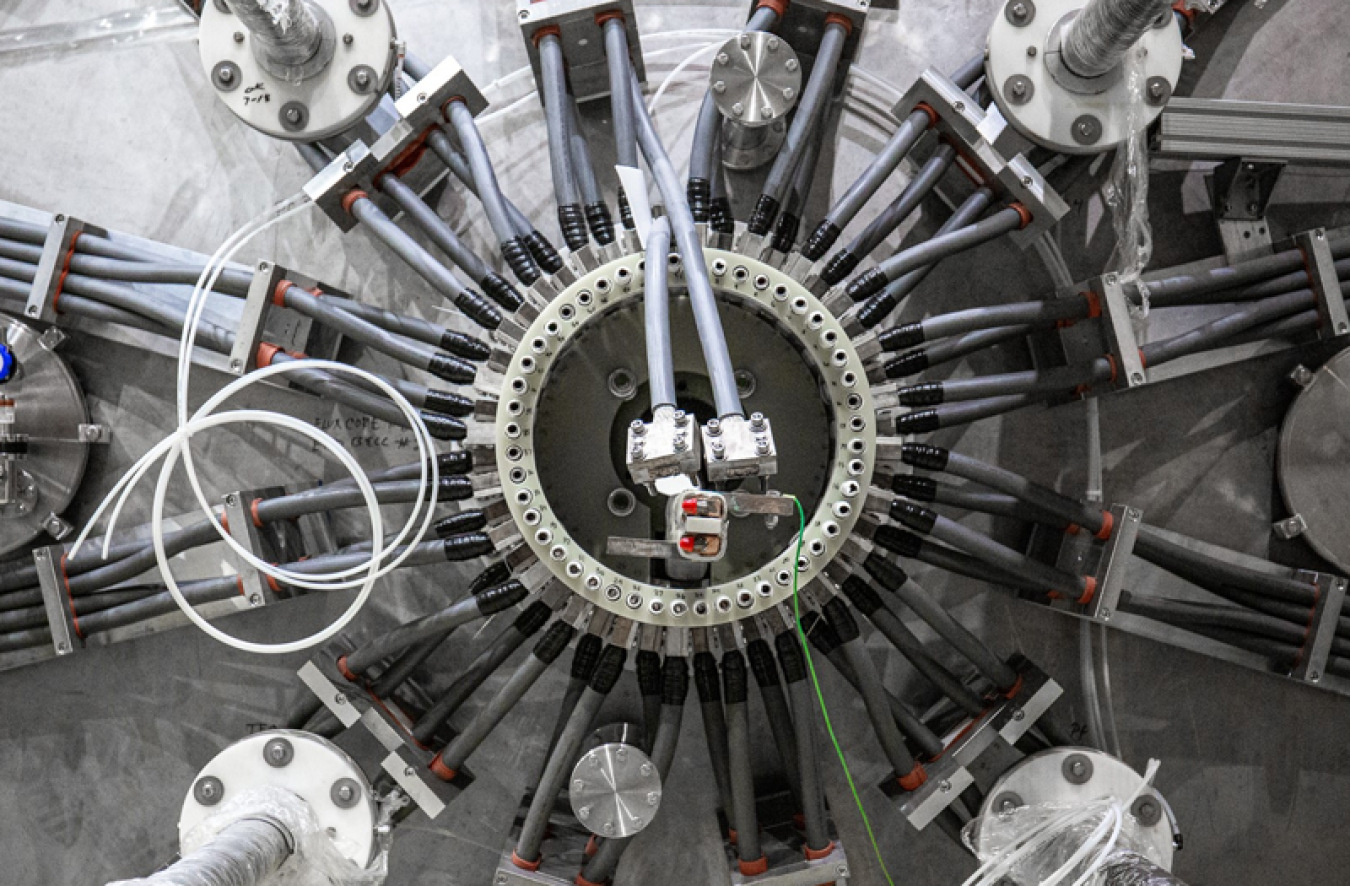A new experiment at DOE’s Princeton Plasma Physics Laboratory will provide insight into a fundamental process in plasma.
February 9, 2024
Plasma is unusual here on Earth. It’s a gas that’s so hot that the ions and electrons in it aren’t bound to each other in atoms. Even though it’s one of the four fundamental states of matter, you may never think of it alongside solids, liquids, and gases.
But Earth is unusual in that way. When we consider the rest of the universe, plasma makes up 99 percent of the visible parts of it. It’s what all stars are made of, including our sun. It also plays a big role in how planets form – including Earth.
To understand our universe, we have to understand processes involving plasma. Studying those processes is also important for building future fusion devices. Figuring out how these processes work helps us control the plasma that powers fusion.
Magnetic reconnection is one of the most fundamental processes in plasma. Plasma produces magnetic fields. We use field lines as a visual shorthand to describe where the magnetic force is going. Reconnection happens when the magnetic field lines (the flow of the magnetic force) snap apart and then come back together. It transforms the energy of the magnetic field into energy that revs up the particles in the plasma. It’s an explosive process. In fact, it causes everything from geomagnetic storms to the aurora borealis (Northern Lights). Unfortunately, these geomagnetic storms can damage satellites and even power grids.
Scientists are studying magnetic reconnection to get a grasp on this process and be able to predict and react quickly to geomagnetic storms. In their research, physicists at the Department of Energy’s Princeton Plasma Physics Laboratory combine data from experiments, computer simulations, and data from space observations. While they have the broad outlines of why magnetic reconnection happens, they want to understand why it occurs so quickly and how it transforms so much energy.
One of the latest tools in the quest to understand magnetic reconnection is the Facility for Laboratory Reconnection Experiment – which has the appropriate acronym of FLARE. It’s a bigger, more powerful version of a groundbreaking, previous device called the Magnetic Reconnection Experiment (MRX). The MRX was one of the first efforts to reproduce magnetic reconnection in a laboratory. Once it heated plasma to 20 times the temperature of the sun’s visible surface, it triggered magnetic reconnection in a thousandth of a second. Scientists took measurements of the plasma’s density and temperature as well as magnetic and electric fields. That data allowed them to create an image of what was happening inside of the plasma. After more than 30 years of operation, the lab recently retired the MRX. Its plasma was simply too small to test the latest theories for large astrophysical plasmas.
FLARE will help fill in those gaps. It’s about twice as large as the MRX. That extra size gives it much more space to produce a bigger plasma. It will also be the most powerful device on Earth for studying magnetic reconnection. Compared to MRX, there is 100 times more stored energy to operate FLARE. Its increased size and power will allow it to mimic more accurately what happens in plasmas in space.
In particular, it will be able to test a theory called plasmoid instability. This theory explains why magnetic reconnection has huge effects, even though it happens over very small areas. It describes how thin, stretched-out magnetic fields stretch and break. When these fields break, they form new sheets, each set thinner than the last. As the sheets separate, they form chains of magnetic bubbles (plasmoids). The formation of the bubbles causes the magnetic field lines to crash into each other and break. That breaking feeds magnetic energy into the ions and electrons in the plasma. The boost of energy heats up the particles. The energized particles make the whole system less stable, which causes a runaway effect.
The MRX and other experiments could only produce one reconnection point at a time. FLARE will be able to produce multiple ones. That improvement should allow scientists to see that runaway effect more clearly.
Scientists expect to begin taking data from FLARE in the final quarter of CY 2024. Once it’s up and running, physicists will use these data to test theories and improve the simulations of magnetic reconnection. This new device will provide brilliant insight into one of the universe’s most fundamental processes.
Shannon Brescher Shea

Shannon Brescher Shea ([email protected]) is the social media manager and senior writer/editor in the Office of Science’s Office of Communications and Public Affairs. She writes and curates content for the Office of Science’s Twitter and LinkedIn accounts as well as contributes to the Department of Energy’s overall social media accounts. In addition, she writes and edits feature stories covering the Office of Science’s discovery research and manages the Science Public Outreach Community (SPOC). Previously, she was a communications specialist in the Vehicle Technologies Office in the Office of Energy Efficiency and Renewable Energy. She began at the Energy Department in 2008 as a Presidential Management Fellow. In her free time, she enjoys bicycling, gardening, writing, volunteering, and parenting two awesome kids.

